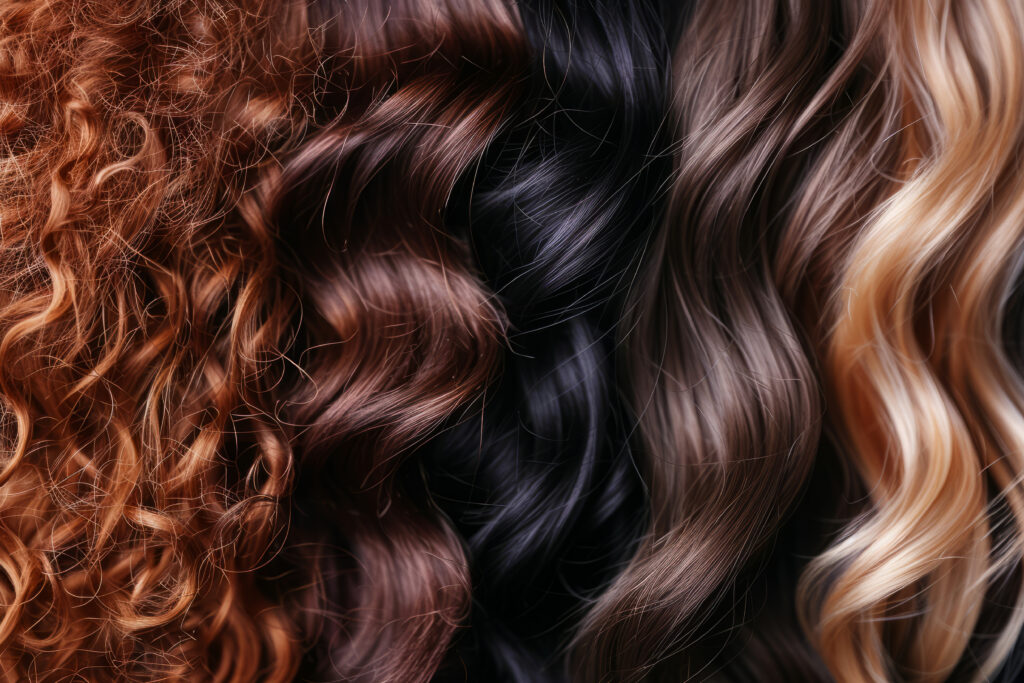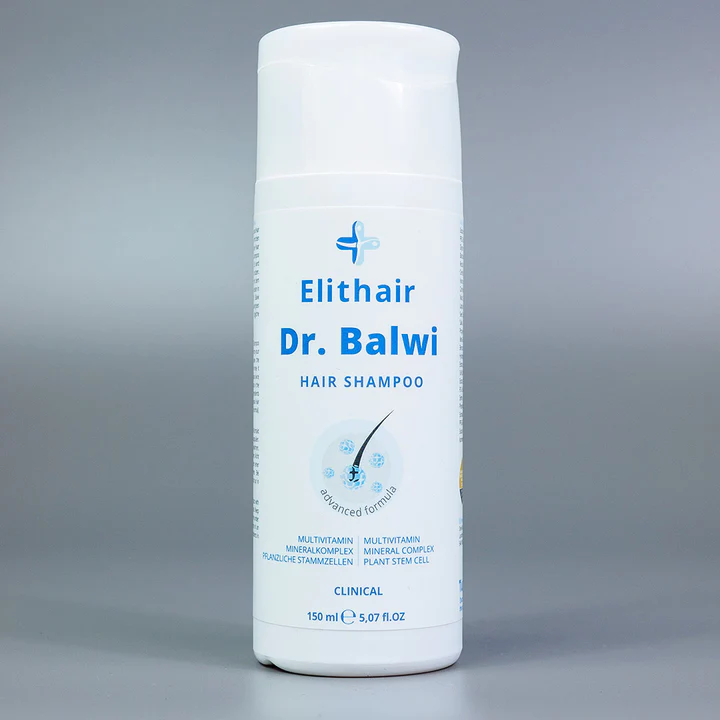
Identify Your Hair Type and Build the Perfect Hair Care Routine
Each one of us is different and we all have unique hair needs. What works for one person’s hair might not work for another’s. When creating a hair care routine, it’s important to first identify your hair type. This will allow you to choose the right products for your hair type and to get the most out of them.
That said, getting a grasp on this topic can often be overwhelming. With so much information online and so many hair products on the market, it can be difficult to narrow things down. In this article, we’ll guide you through identifying your hair type and how to use that knowledge as the basis for creating a customised hair care routine.
Summary
- Why Hair Type Matters
- Identifying Your Hair Type
- Building a Customised Hair Care Routine
- Seasonal Changes
- Conclusion
Why Hair Type Matters
Before making any changes to your hair care routine, it’s important to understand what you’re working with. Otherwise, you run the risk of making your problems worse. For example, if you suffer from an oily scalp, using oil-rich products isn’t likely to help.
By understanding your hair type, you increase your chances of making good decisions and choosing the right products. It’s good to identify what results you’re after, whether that’s improved growth, hydration, volume or definition.

Identifying Your Hair Type
There are four main aspects to consider when determining your hair type:
- Texture
- Density
- Porosity
- Scalp type
Let’s take a closer look at each.
1. Hair Texture or Curl Pattern
When you hear the term “hair type“, the first thing you think of is likely texture. Hair texture refers to the natural shape of your strands, something which is determined by the hair follicles themselves. Textures can range from fine and straight to tightly coiled, and a lot of hair care needs are dependent on your specific texture.
- Type 1: Straight – Shiny and smooth, but prone to oiliness.
- Type 2: Wavy – Ranges from loose waves (2A) to more defined ‘S’ shapes (2C).
- Type 3: Curly – Forms spirals or ringlets, from light curls (3A) to tight corkscrews (3C).
- Type 4: Coiled – Very tight curls or zig-zag patterns. Type 4 hair is often delicate and prone to dryness.
The best way to figure out your hair texture is to allow your hair to air dry after washing without products. This will allow you to observe your hair in its natural state, giving you the best opportunity of classifying it into one of the categories above.
2. Hair Density
People often talk about the thickness of hair, but this can refer to two things – the thickness of individual strands or the number of strands present on the scalp. When we talk about density, it’s the latter we’re referring to. To inspect your own hair density, simply part your hair and observe:
- If you can easily see your scalp, your hair has low density.
- If your scalp is partially visible, you likely have medium density.
- If it’s hard to see your scalp at all, you have high density hair.
Understanding your density helps determine the volume of your hair and which styling products will work best. For instance, heavy creams may weigh down low-density hair but work wonders for high-density curls.
3. Hair Porosity
You may have never thought about it before, but your hair is porous. It is this porosity that allows your hair to absorb and retain moisture. It is a key part of how your hair responds to humidity, hydration and various treatments. To test your hair’s porosity, simply place a dry strand of hair into water and observe:
- Floats: Low porosity – cuticles are tight; moisture struggles to enter.
- Sinks slowly: Medium porosity – well-balanced; retains moisture efficiently.
- Sinks quickly: High porosity – cuticles are open; absorbs moisture fast but loses it quickly too.
Those with high porosity may benefit from sealing oils and protein treatments, while low-porosity hair thrives with lightweight, hydrating products and heat-assisted deep conditioning.
4. Scalp Type
Healthy hair starts at the scalp, which is why it’s crucial to maintain good scalp health. Consider how your scalp feels a day or two after washing:
- Oily: Feels greasy and may need more frequent washing.
- Dry: Itchy, flaky, or tight-feeling.
- Balanced: Little to no noticeable oiliness or tightness.
Choosing the right shampoo and wash frequency is essential in maintaining scalp health. For example, an oily scalp may benefit from clarifying shampoos, while a dry one needs gentle, moisturising formulas.

Building Your Customised Hair Care Routine
Once you’ve identified your hair type, all that remains is to use that knowledge to create a customised hair care routine that best suits your unique needs. Here are our steps for getting started:
Step 1: Choose the Right Shampoo
It is never wise to grab the first bottle of shampoo you see on the shelf. For starters, you should always consider the ingredients. Ideally, all hair and scalp types should be washed with shampoos that are free from sulphates and parabens, which can cause build-up over time and negatively impact hair health.
We recommend looking for natural ingredients wherever possible. Tea tree and peppermint oil both work wonderfully to balance oily scalps, whereas dry scalps can benefit from hydrating ingredients such as aloe vera and chamomile. How frequently you wash your hair can also make a big impact. Oily and fine hair generally needs to be washed more frequently than thick, curly or coiled hair.
Step 2: Conditioner Is A Must
When it comes to building a hair care routine, conditioning is a step you really can’t afford to skip. Conditioner smooths the hair cuticle, replenishes moisture, and helps prevent breakage. As with shampoo, you should choose your conditioner based on your own hair type.
Fine hair benefits from lightweight conditioners that won’t weigh the hair down. Thick, curly hair works best with rich, cream-based conditioners or leave-in conditioners, which help to define the hair’s texture and reduce frizz. Damaged or porous hair requires protein-rich conditioners to strengthen and repair strands.
Step 3: Weekly Treatments
If your hair is particularly dry, damaged, dyed or frequently exposed to heat styling tools, we recommend incorporating a weekly deep treatment into your routine. For this, look for products like hair masks, serums and sealing oils.
Step 4: Daily and Styling Care
There are a number of ways you can protect your hair when styling day-to-day. Invest in heat protectants for use before using any styling tools like blow-dryers, curlers or straighteners. Try to limit heat styling to a few times a week, rather than every day.
Curled or coiled hair should be detangled gently with a wide-toothed comb or with your fingers. Apply a serum or a light oil, such as argan or jojoba, to add shine and reduce frizz.

Tailor Your Routine Through the Seasons
As the seasons change, so too do your hair’s needs. In the dry cold of winter, you scalp might require extra moisture. In summer, consider working UV protection into your routine and pivoting to clarifying treatments to help prevent build-up in the follicles caused by increased sweating. Reassess your customised hair care routine every few months to ensure it still aligns with your hair’s current condition and environment.
Final Thoughts: Listen to Your Hair
You can only work with the hair that you have. Instead of following trends or the routines you see laid out on social media, instead focus on your own hair’s needs and work towards building a customised hair care routine that works for you.
Always remember: consistency is key. With knowledge, high quality products made from natural ingredients, and patience, you can make every day a good hair day.
Looking for the Perfect Products?
At the Dr. Balwi Shop, you’ll find professional-grade solutions developed to support every hair type, from cleansing to conditioning to targeted treatments. Whether you’re navigating post-transplant recovery or simply want to boost your hair’s natural beauty, our formulas are designed to support you every step of the way.
FAQs
How do I know if my hair routine is actually working?
Pay attention to how your hair looks and feels over time. If your hair becomes easier to manage, shows less breakage, has improved shine or moisture balance, and generally looks healthier, your routine is likely working. Regularly reassessing your routine every few months will help ensure it still meets your hair’s evolving needs.
Can I have more than one hair type on my head?
Yes, it’s common to have a mix of hair textures or curl patterns, especially in different areas of your scalp. For instance, you may have looser waves at the front and tighter curls at the back. In such cases, it’s best to choose products and routines that cater to the most dominant or most demanding texture.
How does hair care differ for coloured or chemically treated hair?
Coloured or chemically treated hair often becomes more porous and fragile. This type of hair benefits from protein-rich conditioners, sulphate-free shampoos, and weekly deep conditioning treatments. UV and heat protection become even more essential to prevent further damage.
What’s the difference between leave-in conditioner and rinse-out conditioner?
Rinse-out conditioners are typically used in the shower and help detangle, moisturise, and smooth the hair cuticle after shampooing. Leave-in conditioners stay on the hair and offer prolonged hydration, frizz control, and protection throughout the day—ideal for curly or dry hair types.
Should I change my hair products if I move to a different climate?
Yes, climate has a significant impact on hair needs. In humid climates, you may need anti-frizz and lightweight products. In dry or cold environments, richer, more hydrating products are often necessary. Always observe how your hair reacts and adjust your routine accordingly.
What ingredients should I avoid in hair care products?
It’s generally advisable to avoid sulphates (which can strip natural oils), parabens (linked to potential health concerns), and alcohols like isopropyl alcohol (which can be drying). Fragrance-heavy products can also cause irritation for sensitive scalps.
How can I reduce hair breakage in my daily routine?
Minimise heat styling, avoid brushing wet hair with fine-toothed combs, and use silk or satin pillowcases to reduce friction. Applying leave-in treatments or oils can also help reduce mechanical stress from brushing and styling.
What role does diet or hydration play in hair health?
A balanced diet rich in vitamins like biotin, vitamin D, and iron supports strong, healthy hair. Drinking enough water helps maintain scalp hydration and overall follicle function. Hair health often reflects internal health, so nutrition should not be overlooked.
How long does it take to see results from a new hair care routine?
It typically takes 4–8 weeks to see noticeable improvements in hair health after changing your routine. However, some results, like increased softness or reduced frizz, may be visible sooner. Consistency is essential for long-term change.
Can men and women follow the same hair care routine?
Hair care needs are based on hair type rather than gender. However, hormonal differences can affect scalp oiliness and hair thinning patterns, so routines may differ slightly in practice. Both men and women benefit from customising their routines based on scalp condition, porosity, and texture.



